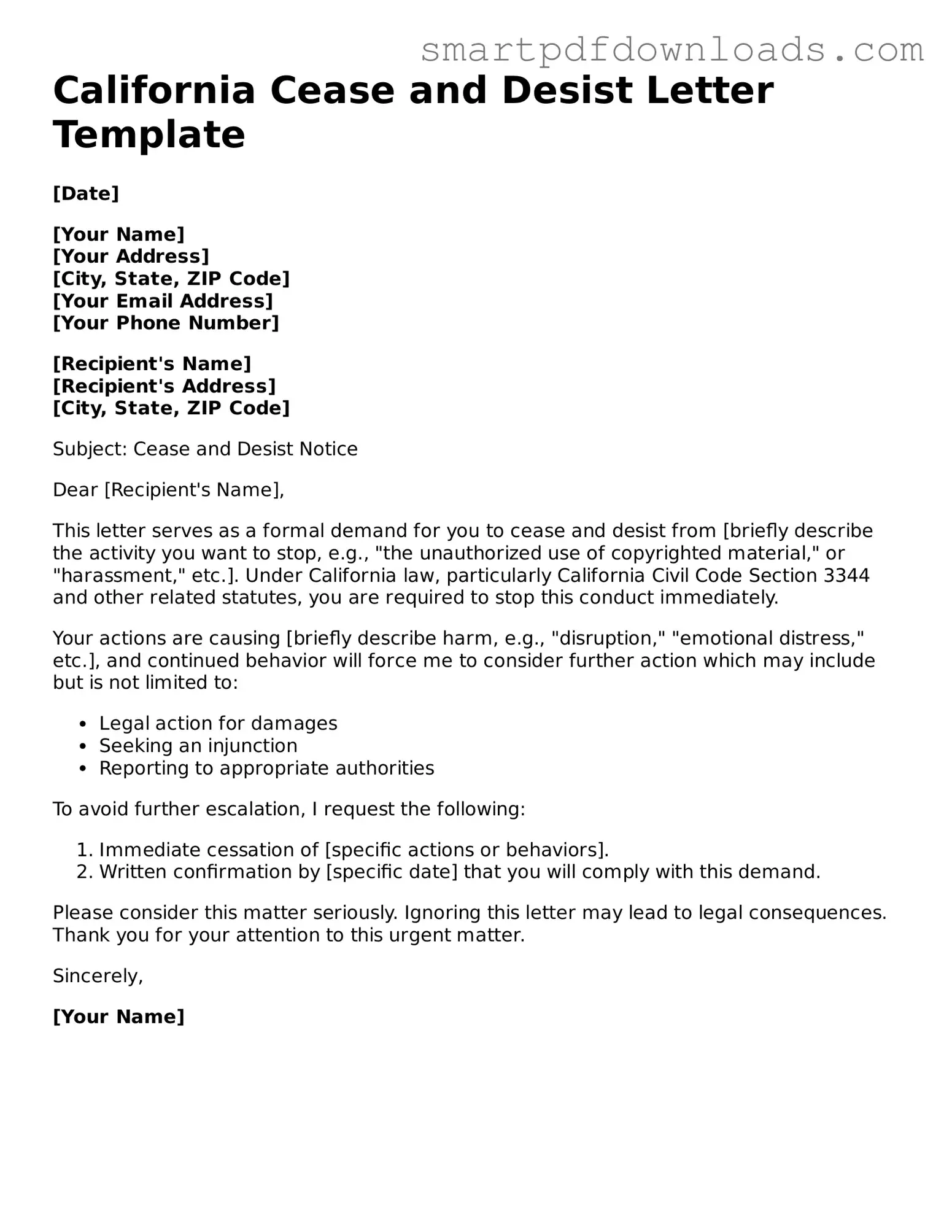California Cease and Desist Letter Template
[Date]
[Your Name]
[Your Address]
[City, State, ZIP Code]
[Your Email Address]
[Your Phone Number]
[Recipient's Name]
[Recipient's Address]
[City, State, ZIP Code]
Subject: Cease and Desist Notice
Dear [Recipient's Name],
This letter serves as a formal demand for you to cease and desist from [briefly describe the activity you want to stop, e.g., "the unauthorized use of copyrighted material," or "harassment," etc.]. Under California law, particularly California Civil Code Section 3344 and other related statutes, you are required to stop this conduct immediately.
Your actions are causing [briefly describe harm, e.g., "disruption," "emotional distress," etc.], and continued behavior will force me to consider further action which may include but is not limited to:
- Legal action for damages
- Seeking an injunction
- Reporting to appropriate authorities
To avoid further escalation, I request the following:
- Immediate cessation of [specific actions or behaviors].
- Written confirmation by [specific date] that you will comply with this demand.
Please consider this matter seriously. Ignoring this letter may lead to legal consequences. Thank you for your attention to this urgent matter.
Sincerely,
[Your Name]
